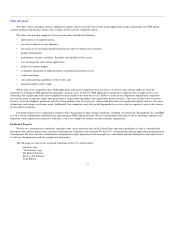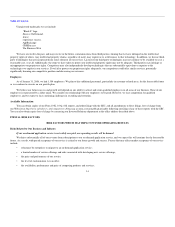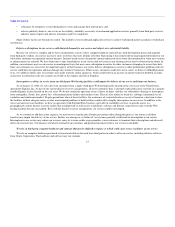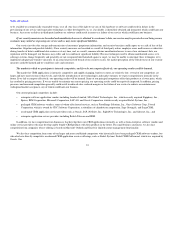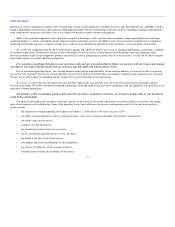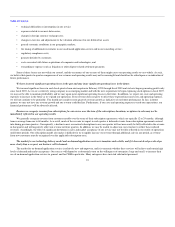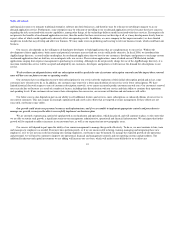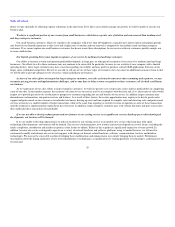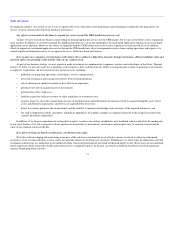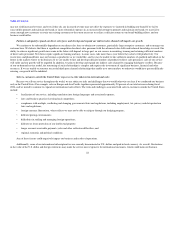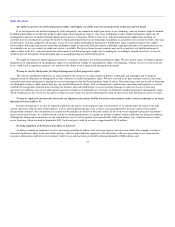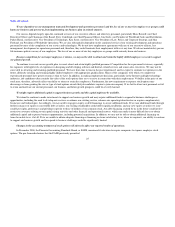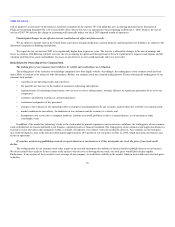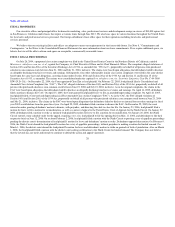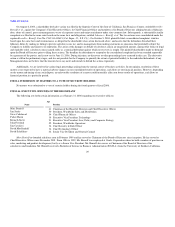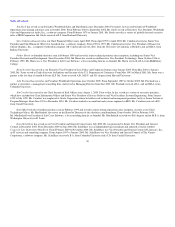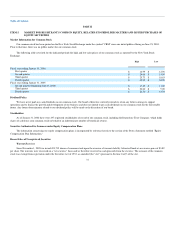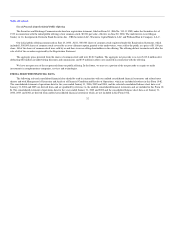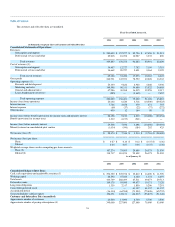Salesforce.com 2005 Annual Report Download - page 26
Download and view the complete annual report
Please find page 26 of the 2005 Salesforce.com annual report below. You can navigate through the pages in the report by either clicking on the pages listed below, or by using the keyword search tool below to find specific information within the annual report.
Table of Contents
Any failure to protect our intellectual property rights could impair our ability to protect our proprietary technology and our brand.
If we fail to protect our intellectual property rights adequately, our competitors might gain access to our technology, and our business might be harmed.
In addition, defending our intellectual property rights might entail significant expense. Any of our trademarks or other intellectual property rights may be
challenged by others or invalidated through administrative process or litigation. While we have U.S. and international patent applications pending, we
currently have no issued patents and may be unable to obtain patent protection for our technology. In addition, if any patents are issued in the future, they may
not provide us with any competitive advantages, or may be successfully challenged by third parties. Furthermore, legal standards relating to the validity,
enforceability and scope of protection of intellectual property rights are uncertain. Effective patent, trademark, copyright and trade secret protection may not
be available to us in every country in which our service is available. The laws of some foreign countries may not be as protective of intellectual property
rights as those in the U.S., and mechanisms for enforcement of intellectual property rights may be inadequate. Accordingly, despite our efforts, we may be
unable to prevent third parties from infringing upon or misappropriating our intellectual property.
We might be required to spend significant resources to monitor and protect our intellectual property rights. We may initiate claims or litigation against
third parties for infringement of our proprietary rights or to establish the validity of our proprietary rights. Any litigation, whether or not it is resolved in our
favor, could result in significant expense to us and divert the efforts of our technical and management personnel.
We may be sued by third parties for alleged infringement of their proprietary rights.
The software and Internet industries are characterized by the existence of a large number of patents, trademarks and copyrights and by frequent
litigation based on allegations of infringement or other violations of intellectual property rights. We have received in the past, and may receive in the future,
communications from third parties claiming that we have infringed on the intellectual property rights of others. Our technologies may not be able to withstand
any third-party claims or rights against their use. Any intellectual property claims, with or without merit, could be time-consuming and expensive to resolve,
could divert management attention from executing our business plan and could require us to pay monetary damages or enter into royalty or licensing
agreements. In addition, many of our subscription agreements require us to indemnify our customers for third-party intellectual property infringement claims,
which would increase the cost to us of an adverse ruling on such a claim. An adverse determination could also prevent us from offering our service to others.
We may be required to purchase the interest in our Japanese joint venture held by our joint venture partner, under certain circumstances, on terms
that may not be favorable to us.
In some circumstances, we may be required to purchase the interest of our Japanese joint venture partner. If we default under the terms of our joint
venture agreement with our joint venture partner, or if we and our partner disagree over a course of action proposed for the joint venture entity and the
disagreement continues, then our partner may require that we purchase its interest in the joint venture. In the event we are required to purchase our partner's
interest in the joint venture, we could be forced to make an unanticipated outlay of a significant amount of capital, which could harm our financial condition.
Although the timing and circumstances of any such purchase, were it to be required, are not predictable, if the joint venture were valued based on its most
recent financing, which occurred in September 2003, the buyout price could be as much as approximately $13.0 million.
Evolving regulation of the Internet may affect us adversely.
As Internet commerce continues to evolve, increasing regulation by federal, state or foreign agencies becomes more likely. For example, we believe
increased regulation is likely in the area of data privacy, and laws and regulations applying to the solicitation, collection, processing or use of personal or
consumer information could affect our customers' ability to use and share data, potentially reducing demand for CRM solutions and
23


